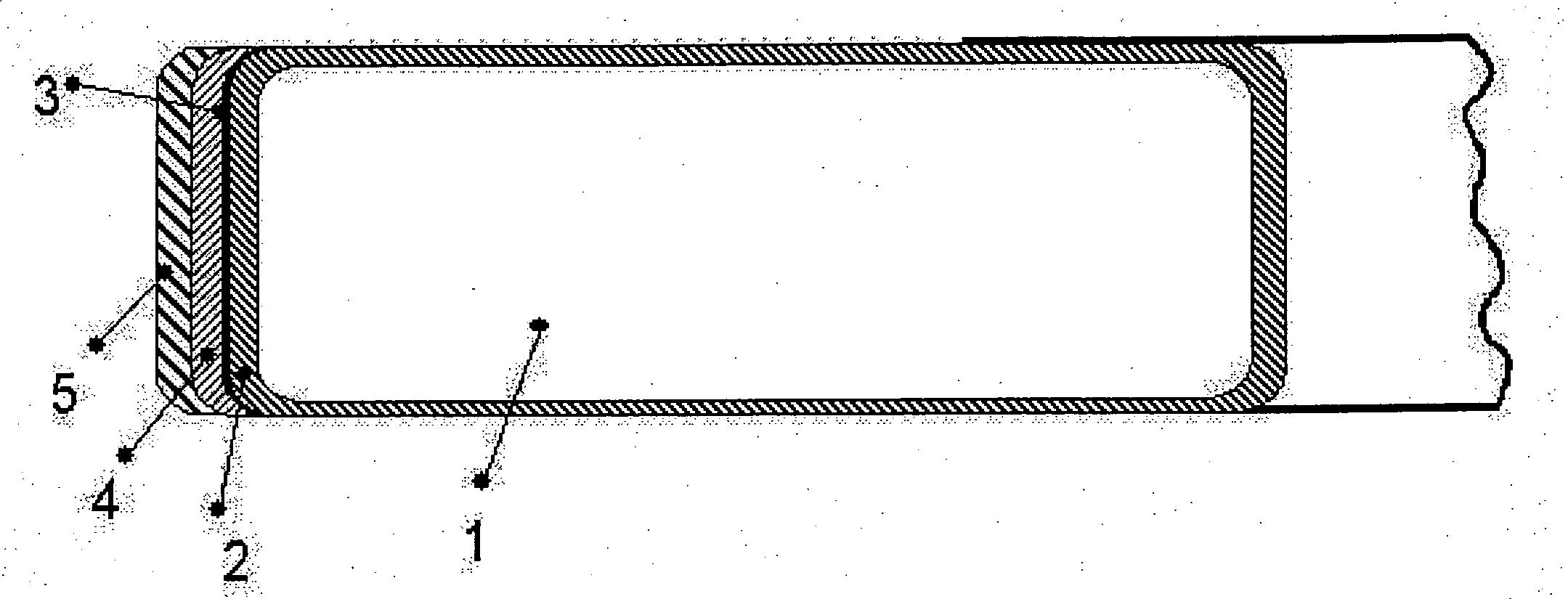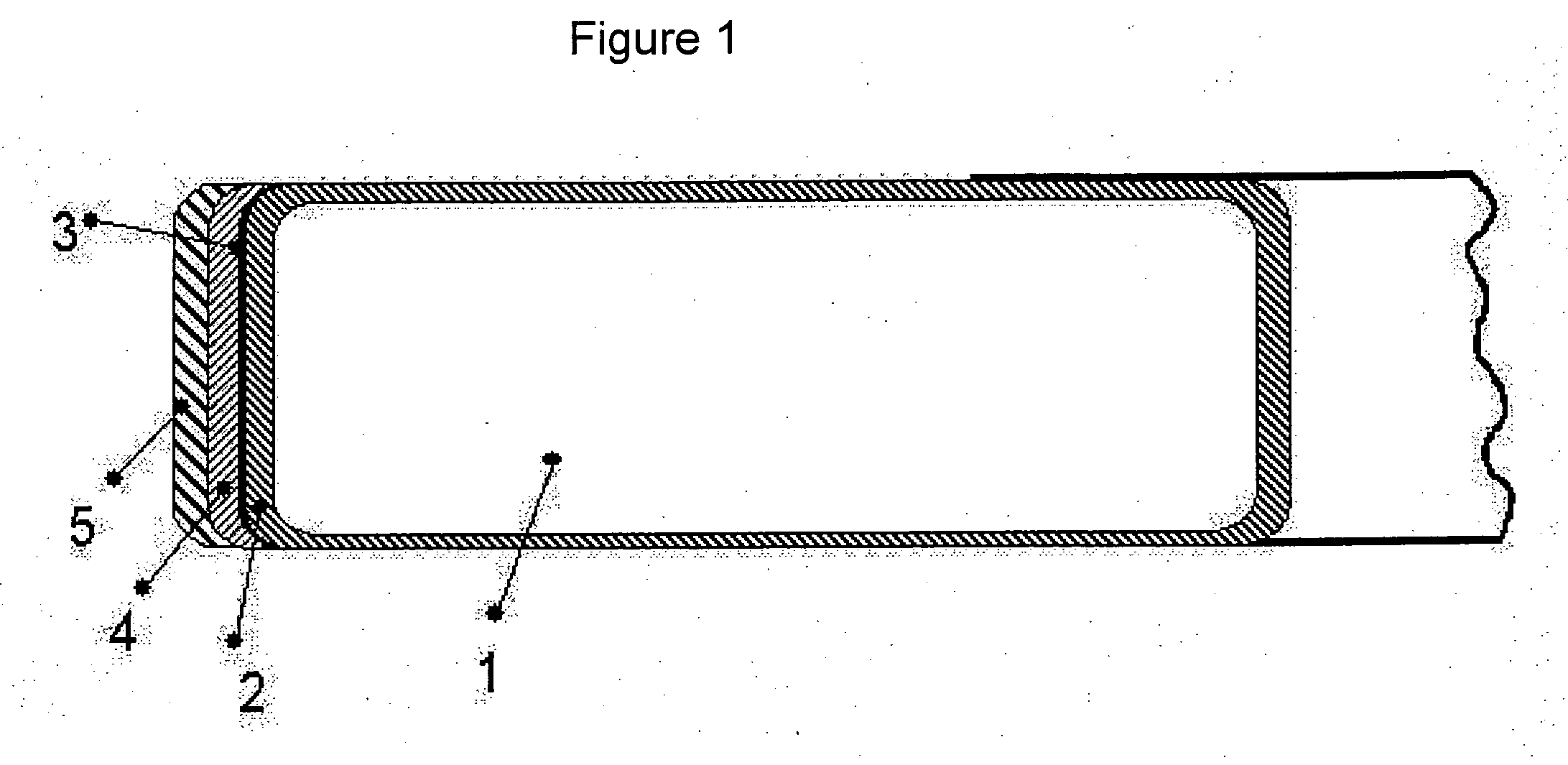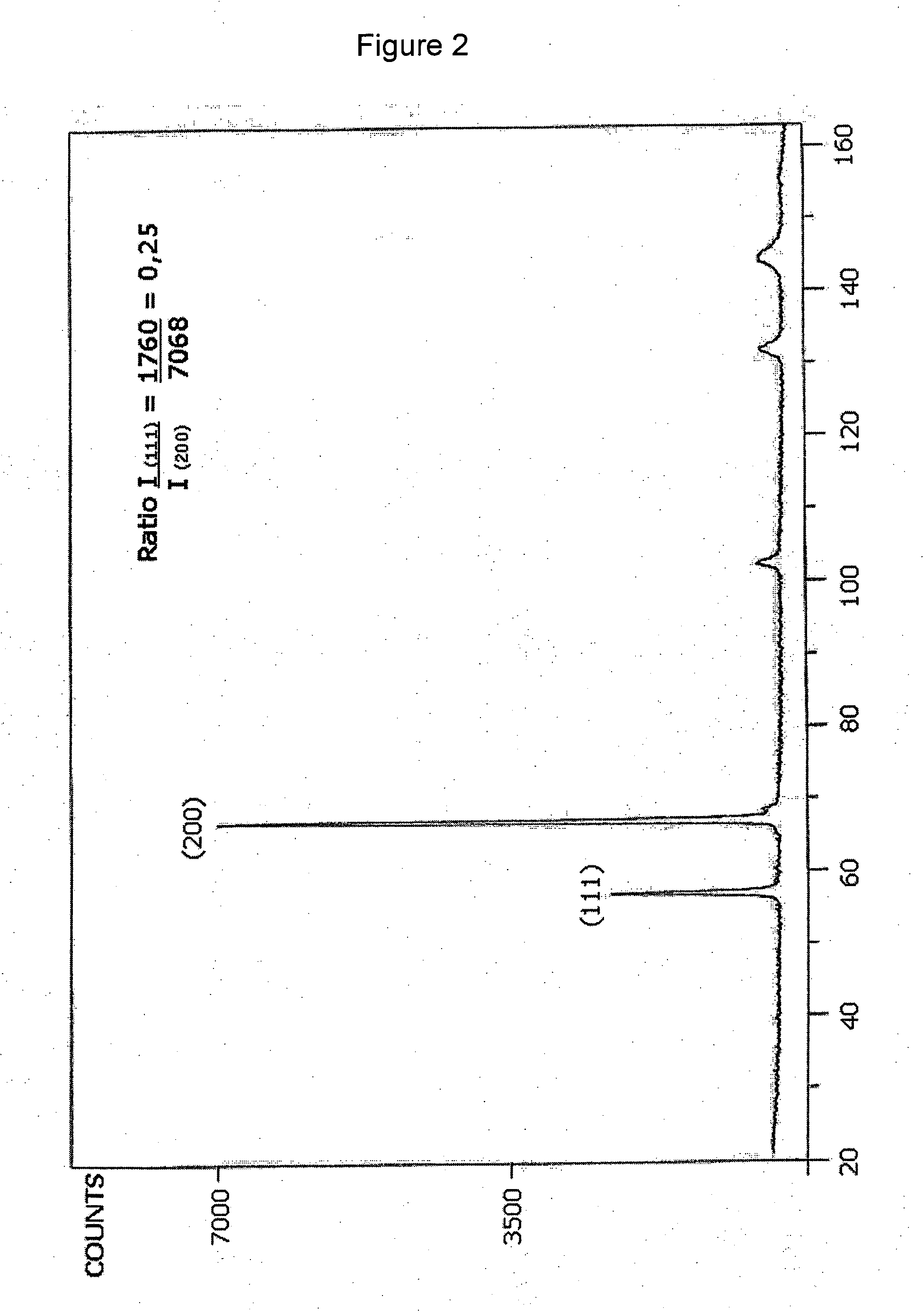Piston ring for internal combustion engines
a technology of internal combustion engine and piston ring, which is applied in the direction of mechanical equipment, transportation and packaging, natural mineral layered products, etc., can solve the problems of reducing the resistance of the surface crack to external stresses, reducing the tenacity of fractures, and presenting a higher degree of difficulty in moving dislocations in the crystal plane 200, so as to relieve external stresses of shearing, the effect of absorbing internal compressive stresses and reducing the difficulty of dislocation movemen
- Summary
- Abstract
- Description
- Claims
- Application Information
AI Technical Summary
Benefits of technology
Problems solved by technology
Method used
Image
Examples
example 1
[0045] With the above-mentioned method, piston rings were produced represented by sample coatings 1, 2 and 4 on table 1. Two rings of each condition were assembled in a 6 cylinder 450 KW heavy duty Diesel engine. The rings were submitted to an accelerated thermal shock test in a dynamometer cell for 500 hours, where the liner and block thermal deformation conditions, besides severe conditions regarding oil film rupture, are particularly keen to the generation of high load on the coated surface of the piston rings. Visual and metallurgical evaluation of the rings after the test was conducted and can be seen on table 2.
[0046] The rings of coating samples 1 and 2 on table 1 are representative of the state of the art, and they have residual oxygen content on the coating that was not originated from any intentional addition of oxygen. These coatings present a predominance of (200) crystal plane oriented parallel to the coating surface, and have an intensity ratio between (111) and (200)...
example 2
[0049] With the above-mentioned method, piston rings were produced represented by sample coatings 4, 8 and 12 on table 1. Two rings of each condition were assembled in a 6 cylinder 450 KW heavy duty diesel engine. The rings were submitted to an accelerated thermal shock test in a dynamometer cell for 500 hours, in conditions identical to example 1. Visual and metallurgical evaluation of the rings after the test was conducted and can be seen on table 3.
[0050] Rings representative of coating sample 4 on table 1 were taken from the same lot of samples used in Example 1 and are representative of the state of the art. Both rings present incidence of micro-cracks on the coating and localized loss of pieces of the coating.
[0051] The rings representative of coating samples 8 and 12 on table 1 were produced with the process above-mentioned, wherein it was added a controlled flow of oxygen gas to the nitrogen reacting gas. These coatings were intentionally selected to cover the range of oxy...
example 3
[0053] With the above-mentioned method, piston rings were produced represented by sample coatings 4, 7 and 12 on table 1. Two rings of each condition were assembled in a 6 cylinders 450 KW heavy duty Diesel engine. The rings were submitted to an accelerated thermal shock test in a dynamometer cell for 500 hours, in conditions identical to examples 1 and 2. Visual and metallurgical evaluation of the rings after the test was conducted and can be seen on table 4.
[0054] Rings representative of coating sample 4 on table 1 were taken from the same lot of samples used in engine tests of Examples 1 and 2 and are representative of the state of the art, as mentioned before. Both rings present incidence of micro-cracks on the coating and localized loss of pieces of the coating.
[0055] The rings representative of coating samples 7 and 12 on table 1 were produced with the process above-mentioned, wherein a controlled flow of oxygen gas was added to the nitrogen reacting gas. These coatings were...
PUM
| Property | Measurement | Unit |
|---|---|---|
| Vickers hardness | aaaaa | aaaaa |
| thickness | aaaaa | aaaaa |
| Vickers hardness | aaaaa | aaaaa |
Abstract
Description
Claims
Application Information
 Login to View More
Login to View More - R&D
- Intellectual Property
- Life Sciences
- Materials
- Tech Scout
- Unparalleled Data Quality
- Higher Quality Content
- 60% Fewer Hallucinations
Browse by: Latest US Patents, China's latest patents, Technical Efficacy Thesaurus, Application Domain, Technology Topic, Popular Technical Reports.
© 2025 PatSnap. All rights reserved.Legal|Privacy policy|Modern Slavery Act Transparency Statement|Sitemap|About US| Contact US: help@patsnap.com



